
On this day in Tudor history, 7th November, Henry VII’s first Parliament attainted Richard III and his supporters (1485); and Archbishop Thomas Cranmer visited a confined Queen Catherine Howard, seeking a confession (1541)…
[Read More...]
On this day in Tudor history, 7th November, Henry VII’s first Parliament attainted Richard III and his supporters (1485); and Archbishop Thomas Cranmer visited a confined Queen Catherine Howard, seeking a confession (1541)…
[Read More...]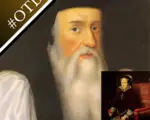
On this day in Tudor history, 12th September, Archbishop Thomas Cranmer’s trial started in Oxford – he was in big trouble! And Protestant reformer and leading politician in the reign of Mary, Queen of Scots, Archibald Campbell, 5th Earl of Argyll, died suddenly at Barbreck…
[Read More...]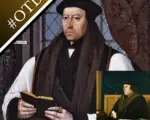
On this day in Tudor history, 2nd July, Thomas Cranmer, Archbishop of Canterbury, was born; Thomas Cromwell was appointed Lord Privy Seal following Thomas Boleyn’s demotion; and a sexton and gravedigger known as Old Scarlett was buried at Peterborough Cathedral…
[Read More...]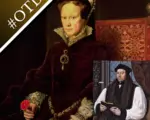
On this day in Tudor history, 30th March, Thomas Cranmer was consecrated as Archbishop of Canterbury; Robert Ferrar, Bishop of St David’s, was burnt to death; Mary I made her will, believing she was pregnant; and administrator Sir Ralph Sadler died…
[Read More...]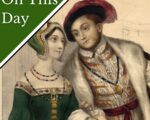
On this day in Tudor history, 28th May 1533, at Lambeth Palace, Thomas Cranmer, the recently appointed Archbishop of Canterbury, proclaimed the validity of the marriage of Henry VIII and Anne Boleyn.
This proclamation was the result of a secret enquiry carried out by the archbishop following the ruling of the special court set up at Dunstable Priory to hear the case for the annulment of Henry VIII’s first marriage. That court dissolved the marriage of Henry VIII and Catherine of Aragon. Convocation had already determined, on 5th April 1533, that the Pope had no power to issue a dispensation for a man to marry his brother’s widow when it was contrary to God’s law.
[Read More...]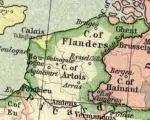
On 10th April 1540, priest Sir William Peterson, former commissary of the Archbishop of Canterbury in Calais, and William Richardson, priest of St Mary’s in Calais, were hanged, drawn and quartered in the marketplace at Calais for denying Henry VIII’s supremacy.
In his article “Martyrdoms at Calais in 1540?”, Rev. L.E. Whatmore writes of how from 1525, Sir William Peterson was “the most important priest in Calais” because of his “double capacity” as “the Archbishop’s and the Cardinal’s representative” in Calais. 1532 saw the death of William Warham, Archbishop of Canterbury, who was replaced by Thomas Cranmer. Peterson continued in his office under Cranmer and in September of that year was also appointed rector of Bonynges in the Calais Marches.
[Read More...]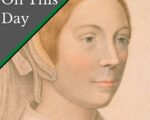
On this day in Tudor history, 11th November 1541, the Feast of Martinmas, King Henry VIII’s council sent Archbishop Thomas Cranmer a letter containing instructions to move Queen Catherine Howard, who had been confined to her apartments in Hampton Court Palace, to Syon House, formerly Syon Abbey.
In the video and transcript below, I share the instructions that Archbishop Cranmer was given and what Catherine was sent for her time at Syon. I also explain what else happened on this day in 1541, along with some trivia about the people in charge of Catherine’s household at Syon.
[Read More...]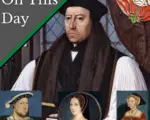
On this day in Tudor history, 19th May 1536, Queen Anne Boleyn was executed within the confines of the Tower of London.
It must have been an incredibly hard day for the queen’s friend, Archbishop Thomas Cranmer. Not only did he have a visit from a friend regarding a terrifying vision, in the early hours… Not only did he have to cope with the idea of his friend and patron being beheaded, but he had to issue a dispensation for the king to marry again!
[Read More...]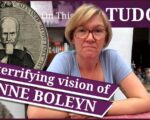
On this day in Tudor history, 17th March 1565, Scottish theologian and Reformer Alexander Alesius (also known as Ales, Aless), died in either Leipzig or Edinburgh.
Alesius wrote a huge number of theological works, was friends with reformers Philip Melancthon and Thomas Cranmer, Archbishop of Canterbury, but had a row with the Bishop of London at one point.
Find out more about Alexander Alesius and his terrifying vision or nightmare he experienced in the early hours of 19th May 1536, the day of Queen Anne Boleyn’s execution in this talk…
[Read More...]
On this day in Tudor history, 25th November 1545, lawyer, member of Parliament, diplomat and ecclesiastical administrator, Sir Thomas Legh (Leigh), died.
Legh was a faithful servant to King Henry VIII, but his work during the dissolution of the monasteries led to complaints against him and even rebellion.
He was a vicious man, known for his harsh treatment of monks, but he also played a key role in protecting Thomas Cranmer, Archbishop of Canterbury, in 1543 when his enemies tried to bring him down.
Find out more about this Tudor man in this talk…
[Read More...]
On this day in Tudor history, 25th November 1545, lawyer, member of Parliament, diplomat and ecclesiastical administrator, Sir Thomas Legh (Leigh), died.
Legh was a faithful servant to King Henry VIII, but his work during the dissolution of the monasteries led to complaints against him and even rebellion.
He was a vicious man, known for his harsh treatment of monks, but he also played a key role in protecting Thomas Cranmer, Archbishop of Canterbury, in 1543 when his enemies tried to bring him down.
Let me give you a few facts about this Tudor man, Sir Thomas Legh…
[Read More...]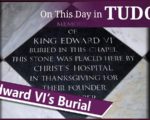
On this day in Tudor history, 8th August 1553, fifteen-year-old King Edward VI was buried in Henry VII’s Lady Chapel in Westminster Abbey in a funeral service performed by Thomas Cranmer, Archbishop of Canterbury.
Although his Catholic half-sister, Mary, was on the throne, Edward was buried with Protestant rites and it was the first time the English Book of Common Prayer was used for the funeral of a monarch.
Find out more about Edward VI’s funeral, how Mary I marked his passing, and Edward VI’s resting place, in today’s talk.
[Read More...]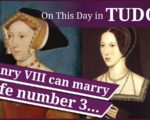
On this day in Tudor history, 19th May 1536, Queen Anne Boleyn was executed within the confines of the Tower of London.
It must have been an incredibly hard day for the queen’s friend, Archbishop Thomas Cranmer. Not only did he have a visit from a friend regarding a terrifying vision, in the early hours… Not only did he have to cope with the idea of his friend and patron being beheaded, but he had to issue a dispensation for the king to marry again!
Find out more in today’s talk.
[Read More...]
On this day in Tudor history, 17th March 1565, Scottish theologian and Reformer Alexander Alesius (also known as Ales, Aless), died in either Leipzig or Edinburgh.
Alesius wrote a huge number of theological works, was friends with reformers Philip Melancthon and Thomas Cranmer, Archbishop of Canterbury, but had a row with the Bishop of London at one point.
Let me tell you a bit more about Alexander Alesius and also a terrifying vision or nightmare he experience in the early hours of 19th May 1536, the day of Queen Anne Boleyn’s execution.
[Read More...]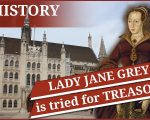
On this day in Tudor history, 13th November 1553, in the reign of Queen Mary I, the former queen Jane, or Lady Jane Grey, was tried for treason at Guildhall in London. She wasn’t the only one tried, her husband Lord Guildford Dudley, his brothers Ambrose and Henry Dudley, and Thomas Cranmer, Archbishop of Canterbury, were also tried for treason for their parts in putting Jane on the throne.
In today’s talk, I explain what happened at their trial and also what happened to these Tudor people after they were found guilty and condemned to death.
[Read More...]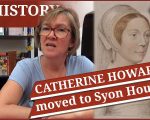
On this day in Tudor history, 11th November 1541, the feast of Martinmas, King Henry VIII’s council sent Archbishop Thomas Cranmer a letter containing instructions to move Queen Catherine Howard from Hampton Court Palace to Syon House, formerly Syon Abbey.
In today’s talk, Claire Ridgway, founder of the Tudor Society, shares the instructions that Cranmer was given and what the queen was sent for her time at Syon. Claire also shares what else happened on this day in 1541, along with some trivia about the people in charge of Catherine’s household at Syon.
[Read More...]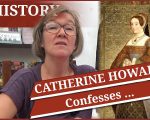
On this day in Tudor history, Monday 7th November 1541, Thomas Cranmer, Archbishop of Canterbury, visited Catherine Howard, fifth wife of King Henry VIII, in her chambers at Hampton Court Palace.
Catherine had been confined to her chambers and Archbishop Cranmer’s job was to get the now hysterical queen to talk, to confess. He visited her a few times over a period of 24 hours and finally got a confession from her. But what did Catherine have to say?
Find out all about Catherine Howard’s confessions, and there were several, in today’s talk.
[Read More...]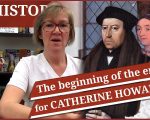
On this day in Tudor history, 2nd November 1541, All Souls’ Day, Archbishop Thomas Cranmer gave King Henry VIII a letter that would spark off the beginning of the end for Queen Catherine Howard, Henry VIII’s fifth wife.
Catherine Howard’s past, her romances with Henry Manox and Francis Dereham, were about to come back to haunt her, and her present relationship with Thomas Culpeper would soon be uncovered.
In today’s talk, I explain exactly what was in Archbishop Cranmer’s letter and what happened next.
[Read More...]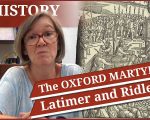
Warning: John Foxe’s account is pretty horrible.
On this day in Tudor history, 16th October 1555, in the reign of Queen Mary I, Protestants Hugh Latimer and Nicholas Ridley were burned at the stake in Oxford for heresy. Along with Archbishop Thomas Cranmer, they have become known as the Oxford Martyrs.
In today’s talk, I give an overview of Latimer and Ridley’s careers, and then shares an account of their burnings from John Foxe’s Book of Martyrs.
“Every eye shed tears at the afflicting sight of these sufferers, who were among the most distinguished persons of their time in dignity, piety, and public estimation.” John Foxe
[Read More...]
On this day in Tudor history, 10 September 1533, King Henry VIII and Queen Anne Boleyn’s daughter, Elizabeth (the future Queen Elizabeth I), was christened at the Church of Observant Friars in Greenwich.
Elizabeth I’s christening service was a lavish ceremony presided over by Archbishop Thomas Cranmer, who also stood as the little girl’s godfather.
In today’s talk, I share a contemporary source of Elizabeth’s christening service and also of the celebrations that followed.
[Read More...]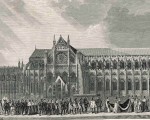
On this day in Tudor history, 1st June 1533, Whitsunday, Queen Anne Boleyn, Henry VIII’s second wife, was crowned queen at Westminster Abbey in a ceremony performed by her good friend, Thomas Cranmer, Archbishop of Canterbury.
It was a long day for the pregnant queen, starting with a procession from Westminster Hall to Westminster Abbey, then there was the actual coronation, where Anne was crowned with St Edward’s crown, and finally the huge coronation banquet.
Find out exactly what Anne Boleyn did on that day in 1533 in today’s video.
[Read More...]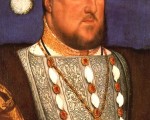
On this day in Tudor history, 23rd May 1533, in the reign of King Henry VIII, Archbishop Thomas Cranmer, declared the sentence of the special court that had met at Dunstable Priory in Bedfordshire.
The Dunstable Priory court had convened to hear the case for the annulment of King Henry VIII’s marriage to his first wife, Catherine of Aragon. Predictably, the court declared the marriage to be contrary to God’s laws and the archbishop was able to inform the king of the sentence of “divorce”.
Find out more in today’s video.
[Read More...]
On this day in Tudor history, 20th February 1547, the boy-king Edward VI was crowned king by Archbishop Thomas Cranmer at Westminster Abbey.
In today’s video, I share details of Edward’s coronation, including the changes made due to his youth – the king was just nine years old. He needed cushions on his throne!
[Read More...]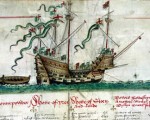
16th July:
1517 – Birth of Frances Grey (née Brandon), Duchess of Suffolk, at Hatfield. She was born on St Francis’s Day and was the eldest daughter of Charles Brandon, Duke of Suffolk, and Mary Tudor, widow of Louis XII and sister of Henry VIII. Click here to read all about her.
1546 – Protestant martyrs Anne Askew, John Lascelles, John Adams and Nicholas Belenian were burned at the stake at Smithfield in London for heresy. Click here to read more about Anne.
1556 – Burnings of Julins Palmer, John Gwyn, and Thomas Robyns [some sources say Askew or Askin] in the old sandpits in Enborne Road, Newbury, after they were found guilty of sedition and heresy. They are known as the Newbury Martyrs.
1557 – Death of Anne of Cleves, fourth wife of Henry VIII, at Chelsea Old Manor after a few months of illness. On the same day, her body was embalmed and placed in a coffin covered with a cloth bearing her arms. Tapers were lit around her coffin and prayers said on a daily basis. She was buried in Westminster Abbey on 4th August.
1574 – Death of John Hart, scholar, phonetician and Chester Herald, in London.
1600 – Death of George Cranmer, scholar, administrator and nephew of Thomas Cranmer, the late Archbishop of Canterbury, in a skirmish with Irish rebels at Carlingford. He was in Ireland serving Charles Blount, Lord Mountjoy, as Secretary during a military campaign.
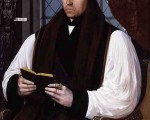
2nd July:
1489 – Archbishop Thomas Cranmer was born in Aslockton, Nottinghamshire, England. He was the son of Thomas Cranmer, and his wife Agnes (nee Hatfield). He served Henry VIII and Edward VI as Archbishop of Canterbury but was burnt at the stake for heresy by Mary I on 21 March 1556.
1497 – Death of Sir William Haute, composer and cousin of Elizabeth Woodville. Haute was Sheriff of Kent at various times, as well as a Justice of the Peace and Commissioner. According to his biographer, Peter Fleming, he was also a patron of musicians, and a composer, composing carols and “polyphonic settings of the Benedicamus domino”.
1536 – Thomas Cromwell formally appointed Lord Privy Seal in Thomas Boleyn’s place.
1540 – Henry Fitzalan, the future 12th Earl of Arundel, appointed Deputy of Calais, replacing Arthur Plantagenet, Viscount Lisle.
1557 – Baptism of Philip Howard, 13th Earl of Arundel, son of Thomas Howard, 4th Duke of Norfolk, and his wife Mary (née Fitzalan). He was baptised in the Chapel Royal at Whitehall Palace with Philip of Spain and Nicholas Heath, Archbishop of York, standing as godfathers and Elizabeth Howard, dowager Duchess of Norfolk, standing as godmother.
1594 – Burial of Robert Scarlett (Old Scarlett), sexton at Peterborough Cathedral. A verse accompanying his portrait in the cathedral states that he buried Catherine of Aragon and Mary, Queen of Scots at the cathedral, but it is not known whether this is true.
1610 – Burial of Richard Knolles, historian and translator, at St Mary’s Church, Sandwich. His works include “The Generall Historie of the Turkes” (1603), The “Six Bookes of a Commonweale” (1606), which was a translation of Jean Bodin’s “La république”, and a translation of Camden’s “Britannia”, which was not published.

28th May:
1509 – Death of Edward Courtenay, 1st Earl of Devon. He was buried at Tiverton.
1533 – Archbishop Thomas Cranmer proclaimed the validity of Henry’s marriage to Anne Boleyn.
1535 – Birth of Sir Thomas North, translator, in London.
1582 – Executions of Roman Catholic priests Thomas Forde, John Shert and Robert Johnson at Tyburn. They were hanged, drawn and quartered.
1611 – Funeral of Thomas Sutton, founder of the London Charterhouse.
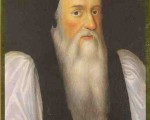
4th December:
1506 – Birth of Thomas Darcy, 1st Baron Darcy of Chiche, courtier and administrator. He was the son of Roger Darcy, Esquire of the Body to Henry VII, and his wife, Elizabeth (née Wentworth). Darcy served as a Privy Councillor in Edward VI’s reign, and also Captain of the Yeoman of the Guard and Lord Chamberlain of the Household. He was arrested for supporting the Duke of Northumberland’s bid to place Lady Jane Grey on the throne, but was pardoned in November 1553.
1514 – Death of Richard Hunne, merchant tailor and leading member of the Lollard community in London. He had been arrested for heresy, and imprisoned in “Lollards’ Tower” in St Paul’s Cathedral on 14th October after the discovery of a Wycliffite Bible at his home, and his body was discovered hanging in his cell from a silk girdle. It was claimed that he had committed suicide, but a coroner’s jury ruled that the hanging had been faked, and that he had been murdered.
1531 – Execution of Rhys ap Gruffudd for treason. He was beheaded after being accused of plotting against the King, although his biographer, R.A. Griffiths, points out that his trial was a “show trial” consisting of contrived testimonies and coached witnesses.
1555 – Papal sentence was passed on Thomas Cranmer in Rome, depriving him of his archbishopric “and of all ecclesiastical dignities”. Permission was also given for the secular authorities to decide on his fate.
1557 – Death of Robert King, Abbot of Thame and Bishop of Oxford. He was buried in Oxford Cathedral. King was one of the judges who sat in judgement at the trial of Thomas Cranmer in 1555.
1585 – Death of John Willock, physician and Scottish reformer, at Loughborough in Leicestershire. He was buried at his church, All Saints, in Loughborough. Willock became the Chaplain of Henry Grey, Marquis of Dorset, and father of Lady Jane Grey, in the 1540s.
1595 – Death of William Whitaker, theologian and Master of St. John’s College, Cambridge, at the master’s lodge after going to bed with a hot “ague”. He was buried at St John’s. His works included Liber precum publicarum (1569), Ad rationes decem Edmundi Campiani jesuitæ responsio (1581), responses to Nicholas Sander and Edmund Campion, Disputatio ad sacra scriptura and Adversus Thomae Stapletoni (1594).
1609 – Death of Alexander Hume, Scottish poet and writer. He is known for his 1599 “Hymnes, or Sacred Songs”, which includes his great poem “Of the Day Estivall” which describes a summer’s day, from dawn until dusk.
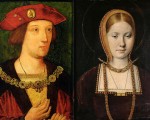
On this day in history…
13th November:
1536 – Murder of Robert Pakington, mercer and member of Parliament, at Cheapside, while making his way to mass at St Thomas of Acre Chapel.
1537 – Burial of Jane Seymour, Henry VIII’s third wife, at St George’s Chapel, Windsor Castle. Henry VIII’s daughter, Mary, acted as chief mourner.
1553 – Lady Jane Grey, her husband Guildford Dudley, his brothers Ambrose and Henry, and Archbishop Thomas Cranmer were tried for treason at a public trial at London’s Guildhall. They were all found guilty as charged, with the men being sentenced to being hanged, drawn and quartered, and Jane to be burned alive, or beheaded.
1601 – Burial of Lady Mary Ramsey (née Dale), famous philanthropist, at Christ Church in London.
1612 – Death of Sir George Carew, administrator, member of Parliament and diplomat, from typhus at his home in Tothill Street, Westminster, London. He was buried at St Margaret’s Church, Westminster. Carew’s served as secretary to Lord Chancellor Hatton and served Elizabeth I and James I as an ambassador.

The Prayer Book Rebellion was a rebellion that took place in the south-west of England in the summer of 1549, in the reign of King Edward VI.
Henry VIII, Edward VI’s father and the previous monarch, had broken with Rome in the 1530s and had been declared the Supreme Head of the Church in England. Although Henry had died a Catholic, the break had brought religious changes to the country and these had become more Protestant when his young son came to the throne.
In 1549, the Book of Common Prayer, which had been composed mainly by Archbishop Thomas Cranmer and which was the official liturgy of Edward VI’s Protestant Church, was introduced into England. It was in English and it replaced the Catholic Mass that the English people were used to celebrating. You can read more about the Book of Common Prayer in Beth von Staats’ excellent article – click here. This change wasn’t embraced by all of the English people and in the summer of 1549, there was trouble in Devon and Cornwall. The rebels called for the rebuilding of abbeys, the restoration of the Six Articles, the restoration of prayers for souls in purgatory, the policy of only the bread being given to the laity and the use of Latin for the mass.
[Read More...]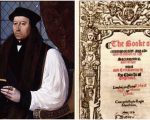
It was on this day in history, 9th June 1549, at Whitsun (Pentecost) services around the country that the Book of Common Prayer was first used.
This prayer book was the official liturgy of Edward VI’s Protestant Church and was composed mainly by Thomas Cranmer, Archbishop of Canterbury. It was written in English and it replaced the traditional Latin mass. It was revised in 1552.
[Read More...]